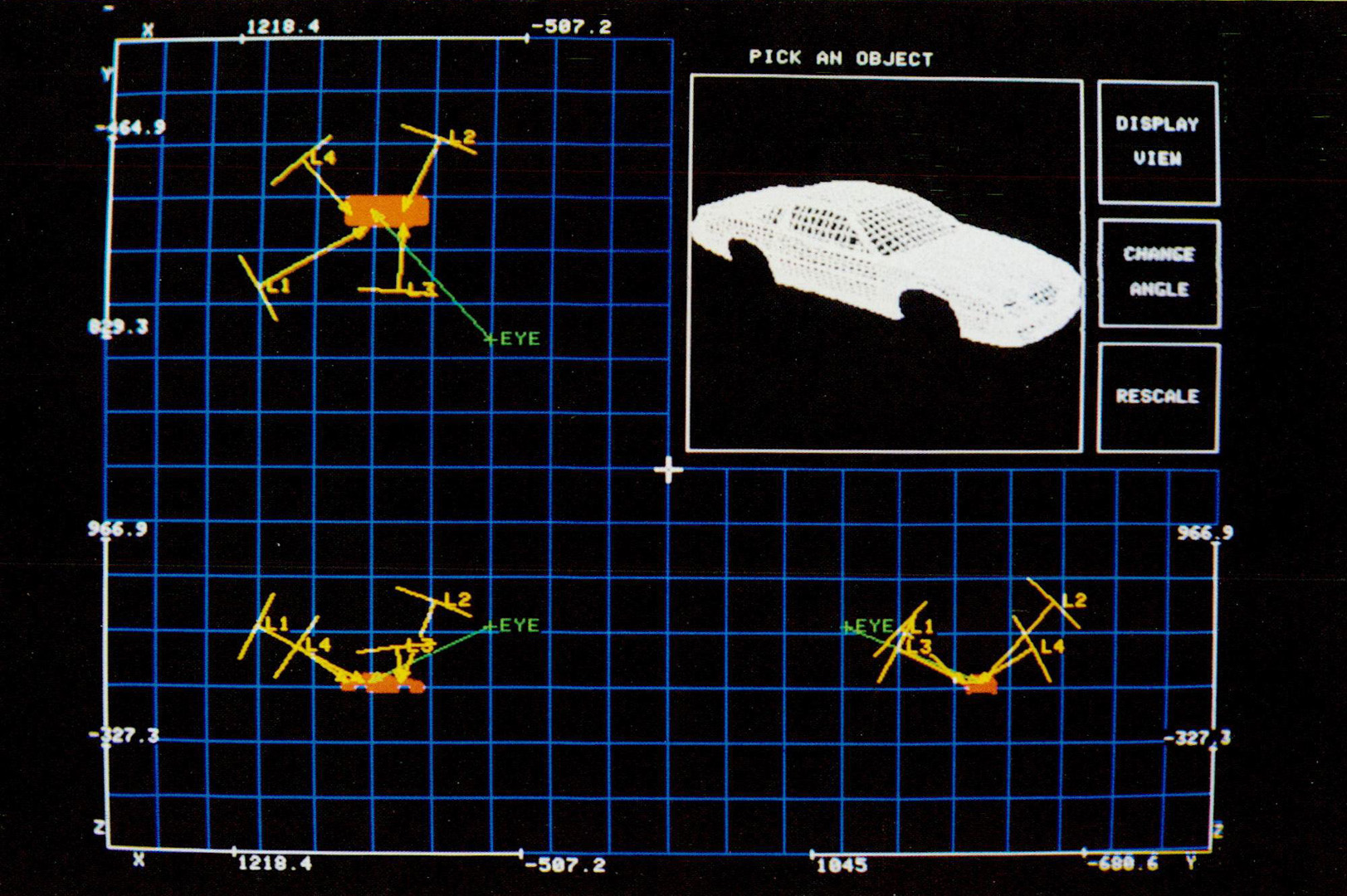“Lighting controls for synthetic images” by Warn
Conference:
Type(s):
Title:
- Lighting controls for synthetic images
Presenter(s)/Author(s):
Abstract:
The traditional point source light used for synthetic image generation provides no adjustments other than position, and this severely limits the effects that can be achieved. It can be difficult to highlight particular features of an object. This paper describes new lighting controls and techniques which can be used to optimize the lighting for synthetic images. These controls are based in part on observations of the lights used in the studio of a professional photographer. Controls include a light direction to aim a light at a particular area of an object, light concentration to simulate spotlights or floodlights, and flaps or cones to restrict the path of a light. Another control relates to the color of the light source and its effect on the perceived color of specular highlights. An object color can be blended with a color for the highlights to simulate different materials, paints, or lighting conditions. This can be accomplished dynamically while the image is displayed, using the video lookup table to approximate the specular color shift
References:
1. Atherton, Peter, Weiler, Kevin, and Greenberg, Donald, “Polygon Shadow Generation,” SIGGRAPH 1978 Proceedings, Computer Graphics, Volume 12, Number 3, pp. 275-281.
2. Bass, Daniel H., “Using the Video Lookup Table for Reflectivity Calculations: Specific Techniques and Graphic Results,” Computer Graphics and Image Processing, Volume 17, pp. 249-261, 1981.
3. Beatty, J. C., Booth, K. S., and Matthies, L. H., “Revisiting Watkins Algorithm,” CMCSS, University of Waterloo, Ontario, Canada, 1981.
4. Blinn, J. F., and Newell, Martin E., “Texture and Reflection in Computer Generated Images,” Communications of the ACM, Volume 19, Number 10, pp. 542-547, October, 1976.
5. Blinn, J. F., “Models of Light Reflection for Computer Synthesized Pictures,” SIGGRAPH 1977 Proceedings, Computer Graphics, Volume 11, Number 2, pp. 192-198.
6. Blinn, J. F., “Simulation of Wrinkled Surfaces,” SIGGRAPH 1978 Proceedings, Computer Graphics, Volume 12, Number 3, pp. 286-292.
7. Blinn, J. F., “Light Reflection Functions for Simulation of Clouds and Dusty Surfaces,” SIGGRAPH 1982 Proceedings, Computer Graphics, Volume 16, Number 3, pp. 21-29.
8. Boyse, John W. and Gilchrist, Jack E., “GMSolid: Interactive Modeling for Design and Analysis of Solids,” IEEE Computer Graphics and Applications, Volume 2, Number 2, pp. 27-40, March 1982.
9. Cook, Robert L. and Torrance, Kenneth E., “A Reflectance Model for Computer Graphics,” SIGGRAPH 1981 Proceedings, Computer Graphics, Volume 15, Number 3, pp. 307-316.
10. Crow, Franklin C., “Shadow Algorithms for Computer Graphics, ” SIGGRAPH 1977 Proceedings, Computer Graphics, Volume 11, Number 2, pp. 242-248.
11. Dill, John C., “An Application of Color Graphics to the Display of Surface Curvature,” SIGGRAPH 1981 Proceedings, Computer Graphics, Volume 15, Number 3, pp. 153-161.
12. Joyce, J. D. and Oliver, N. N., “REGIS – A Relational Information System with Graphics and Statistics,” Proceedings of the AFIPS National Computer Conference 1976, Volume 45, pp. 839-844.
13. Kay, Donald Scott, and Greenberg, Donald, “Transparency for Computer Synthesized Images,” SIGGRAPH 1979 Proceedings, Volume 13, Number 2, pp. 158-164.
14. Oliver, N. N., “COLORSTRESS – A System for Superimposing Stress Patterns in Color on Three Dimensional Structures,” General Motors Research Publication GMR-3712, November, 1981.
15. Phong, B. T., “Illumination for Computer Generated Pictures,” Communications of the ACM, Volume 18, Number 6, pp. 311-317, June 1975.
16. Potmesil, Michael, and Chakravarty, Indranil, “A Lens and Aperature Camera Model for Synthetic Image Generation”, SIGGRAPH 1981 Proceedings, Computer Graphics, Volume 15, Number 3, pp. 297-305.
17. Newell, Martin E., and Blinn, James F., “The Progression of Realism in Computer Generated Images,” ACM 77, Proceedings of the Annual Conference, pp. 444-448.
18. Newman, William M. and Sproull, Robert F., Principles of Interactive Computer Graphics, Second Edition, McGraw-Hill, Chapter 25, 1979.
19. Sutherland, I. E., Sproull R. F., and Schumacker, R. A., “A Characterization of Ten Hidden Surface Algorithms,” ACM Computing Surveys, Volume 6, Number l, pp. 1-55, March 1974.
20. Warn, David R., “VDAM – A Virtual Data Access Manager for Computer Aided Design,” Proceedings of the ACM Workshop on Databases for Interactive Design, pp. 104-111, September 1975.
21. Watkins, G. S., “A Real-Time Visible Surface Algorithm,” Computer Science Department, University of Utah, UTECH-CSC-70-101, June 1970.
22. Whitted, Turner, “An Improved Illumination Model for Shaded Display,” Communications of the ACM, Volume 23, Number 6, pp. 343-349, June 1980.




